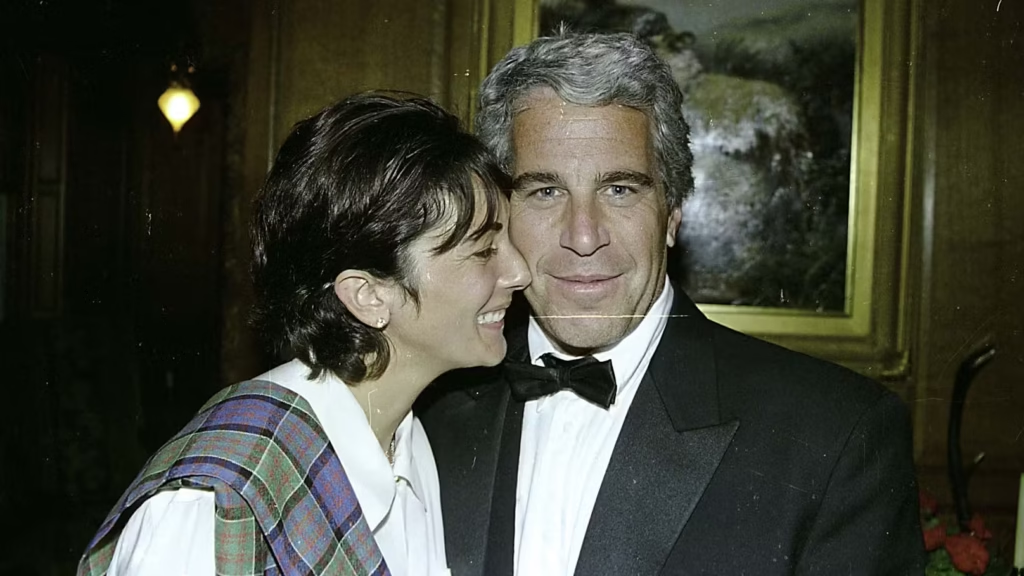World News
As spend management space heats up, Brex and Rho turn to AI startups to help power new products on August 2, 2023 at 12:00 am
The competition in the spend management space continues to intensify.
Brex and Rho today each announced AI-powered/enabled accounts payables offerings.
Their announcements coincidentally came out the same day competitor Ramp announced it had expanded into procurement — further evidence that the companies in the space are clamoring to not only meet customer demand but presumably attempt to outdo each other in terms of what they can offer their customers to help control spend.
Specifically, Brex today revealed Payables, its AI-enabled Accounts Payable (AP) offering, while Rho announced new AI-powered Accounts Payable automation capabilities. Brex’s offering is live today while Rho said its new capabilities will be live later this month.
Via email, Brex co-CEO and co-founder Henrique Dubugras told TechCrunch that launching the new product had been “in the works” since the startup started building Empower, its spend management platform, over a year ago.
He noted that while Brex has used artificial intelligence for years in various capacities such as customer support and underwriting, what is new now is that it partnered with “multiple” machine learning companies such as Scale AI and Photon “to drive the highest accuracy of information extracted from invoices.”
Prior to this launch, Dubugras said that Brex offered a lighter version of bill pay that gave customers the ability to send scheduled and recurring payments. Now, he said they will “have even more advanced spend controls with multi-level approvals.”
For its part, Rho said it is offering AI-powered invoice and bill processing to its clients. Specifically, invoices sent to a designated AP inbox will “undergo automatic digitization” powered by generative AI technology.
In a statement, the company said the process “transforms the invoice into a bill and creates a corresponding liability in the client’s integrated ERP system. Clients can then authorize bill payments through Rho one by one or in bulk, with liabilities automatically marked as paid in the ERP.”
Rho CEO Everett Cook told TechCrunch via email that the new capabilities had been in the works for nearly a year, building on the company’s initial accounts payable release in 2021. Rho has partnered with OpenAI — a portfolio company of Rho investor DFJ Growth.
With the new product, he claims, customers will be able to “configure one-click workflows that help finance teams process thousands of payables in seconds.”
“Our position on generative AI is that it is only useful if it is grounded in tangible business value,” said Rishav Chopra, SVP of product & design at Rho.
Large opportunity
Besides wanting to better compete, both Brex and Rho expect their new offerings to increase revenue for their respective companies.
Dubugras said the new payables product should increase the percentage of customers’ spend processed via Brex.
“As a result, some of that spend will be on their Brex card, one way in which Brex earns revenue,” he told TechCrunch. “Plus, using a Brex business account for bill pay, another way in which Brex earns revenue, allows customers to send payments faster, eliminating ACH delays while also earning passive yield.”
Brex claims that it is unique relative to other companies in the market in that it is “the only player” with its own business account that can earn revenue in this way, allowing the company to offer payables for free. (TechCrunch has not independently verified this claim.)
Meanwhile, Rho’s Cook believes that while the “timing is pretty coincidental” with Brex’s announcement, he supposes each of their customers were telling them “the same things” — that “they’re fed up with their legacy AP providers and want a modern solution that’s directly integrated with the rest of their finance stack.”
Legacy providers include the likes of Bill.com and Concur.
Dubugras believes there is a lot of competition in the space for a very good reason, telling TechCrunch: “The spend management space is very dynamic and that is because the opportunity is so large across SaaS and payments. Beyond the noise there is still a lot of differentiation between the players.”
Rho’s Chopra also believes that the current macro environment has led to increased pressures on the part of CFOs and finance teams “to move faster than ever and operate leaner.” This in turn has — for obvious reasons — created more demand for spend management products.
Want more fintech news in your inbox? Sign up for The Interchange here.
The competition in the spend management space continues to intensify. Brex and Rho today each announced AI-powered/enabled accounts payables offerings. Their announcements coincidentally came out the same day competitor Ramp announced it had expanded into procurement — further evidence that the companies in the space are clamoring to not only meet customer demand but presumably
News
US May Completely Cut Income Tax Due to Tariff Revenue

President Donald Trump says the United States might one day get rid of federal income tax because of money the government collects from tariffs on imported goods. Tariffs are extra taxes the U.S. puts on products that come from other countries.

What Trump Is Saying
Trump has said that tariff money could become so large that it might allow the government to cut income taxes “almost completely.” He has also talked about possibly phasing out income tax over the next few years if tariff money keeps going up.
How Taxes Work Now
Right now, the federal government gets much more money from income taxes than from tariffs. Income taxes bring in trillions of dollars each year, while tariffs bring in only a small part of that total. Because of this gap, experts say tariffs would need to grow by many times to replace income tax money.
Questions From Experts
Many economists and tax experts doubt that tariffs alone could pay for the whole federal budget. They warn that very high tariffs could make many imported goods more expensive for shoppers in the United States. This could hit lower- and middle‑income families hardest, because they spend a big share of their money on everyday items.
What Congress Must Do
The president can change some tariffs, but only Congress can change or end the federal income tax. That means any real plan to remove income tax would need new laws passed by both the House of Representatives and the Senate. So far, there is no detailed law or full budget plan on this idea.

What It Means Right Now
For now, Trump’s comments are a proposal, not a change in the law. People and businesses still have to pay federal income tax under the current rules. The debate over using tariffs instead of income taxes is likely to continue among lawmakers, experts, and voters.
News
Epstein Files to Be Declassified After Trump Order

Former President Donald Trump has signed an executive order directing federal agencies to declassify all government files related to Jeffrey Epstein, the disgraced financier whose death in 2019 continues to fuel controversy and speculation.
The order, signed Wednesday at Trump’s Mar-a-Lago estate, instructs the FBI, Department of Justice, and intelligence agencies to release documents detailing Epstein’s network, finances, and alleged connections to high-profile figures. Trump described the move as “a step toward transparency and public trust,” promising that no names would be shielded from scrutiny.
“This information belongs to the American people,” Trump said in a televised statement. “For too long, powerful interests have tried to bury the truth. That ends now.”
U.S. intelligence officials confirmed that preparations for the release are already underway. According to sources familiar with the process, the first batch of documents is expected to be made public within the next 30 days, with additional releases scheduled over several months.
Reactions poured in across the political spectrum. Supporters praised the decision as a bold act of accountability, while critics alleged it was politically motivated, timed to draw attention during a volatile election season. Civil rights advocates, meanwhile, emphasized caution, warning that some records could expose private victims or ongoing legal matters.
The Epstein case, which implicated figures in politics, business, and entertainment, remains one of the most talked-about scandals of the past decade. Epstein’s connections to influential individuals—including politicians, royals, and executives—have long sparked speculation about the extent of his operations and who may have been involved.

Former federal prosecutor Lauren Fields said the release could mark a turning point in public discourse surrounding government transparency. “Regardless of political stance, this declassification has the potential to reshape how Americans view power and accountability,” Fields noted.
Officials say redactions may still occur to protect sensitive intelligence or personal information, but the intent is a near-complete disclosure. For years, critics of the government’s handling of Epstein’s case have accused agencies of concealing evidence or shielding elites from exposure. Trump’s order promises to change that narrative.
As anticipation builds, journalists, legal analysts, and online commentators are preparing for what could be one of the most consequential information releases in recent history.
Politics
Netanyahu’s UN Speech Triggers Diplomatic Walkouts and Mass Protests

What Happened at the United Nations
On Friday, Israeli Prime Minister Benjamin Netanyahu addressed the United Nations General Assembly in New York City, defending Israel’s ongoing military operations in Gaza. As he spoke, more than 100 delegates from over 50 countries stood up and left the chamber—a rare and significant diplomatic walkout. Outside the UN, thousands of protesters gathered to voice opposition to Netanyahu’s policies and call for accountability, including some who labeled him a war criminal. The protest included activists from Palestinian and Jewish groups, along with international allies.

Why Did Delegates and Protesters Walk Out?
The walkouts and protests were a response to Israel’s continued offensive in Gaza, which has resulted in widespread destruction and a significant humanitarian crisis. Many countries and individuals have accused Israel of excessive use of force, and some international prosecutors have suggested Netanyahu should face investigation by the International Criminal Court for war crimes, including claims that starvation was used as a weapon against civilians. At the same time, a record number of nations—over 150—recently recognized the State of Palestine, leaving the United States as the only permanent UN Security Council member not to join them.
International Reaction and Significance
The diplomatic walkouts and street protests demonstrate increasing global concern over the situation in Gaza and growing support for Palestinian statehood. Several world leaders, including Colombia’s President Gustavo Petro, showed visible solidarity with protesters. Petro called for international intervention and, controversially, for US troops not to follow orders he viewed as supporting ongoing conflict. The US later revoked Petro’s visa over his role in the protests, which he argued was evidence of a declining respect for international law.

Why Is This News Important?
The Gaza conflict is one of the world’s most contentious and closely-watched issues. It has drawn strong feelings and differing opinions from governments, activists, and ordinary people worldwide. The United Nations, as an international organization focused on peace and human rights, is a key arena for these debates. The events surrounding Netanyahu’s speech show that many nations and voices are urging new action—from recognition of Palestinian rights to calls for sanctions against Israel—while discussion and disagreement over the best path forward continue.
This episode at the UN highlights how international diplomacy, public protests, and official policy are all intersecting in real time as the search for solutions to the Israeli-Palestinian conflict remains urgent and unresolved.

 Entertainment4 weeks ago
Entertainment4 weeks agoWicked Sequel Disappoints Fans: Audience Verdict on For Good

 Entertainment4 weeks ago
Entertainment4 weeks agoAriana & Cynthia Say They’re in a ‘Non‑Demi Curious, Semi‑Binary’ Relationship… WTF Does That Even Mean?

 News4 weeks ago
News4 weeks agoMexico Bans Dophin Shows Nationwide

 Entertainment4 weeks ago
Entertainment4 weeks agoColombia’s ‘Doll’ Arrest: Police Say a 23-Year-Old Orchestrated Hits, Including Her Ex’s Murder

 Entertainment4 weeks ago
Entertainment4 weeks agoHow The Grinch Became The Richest Christmas Movie Ever

 Entertainment4 weeks ago
Entertainment4 weeks agoMiley Cyrus Is Engaged to Maxx Morando

 Business3 weeks ago
Business3 weeks agoLuana Lopes Lara: How a 29‑Year‑Old Became the Youngest Self‑Made Woman Billionaire

 News4 weeks ago
News4 weeks agoUS May Completely Cut Income Tax Due to Tariff Revenue





























